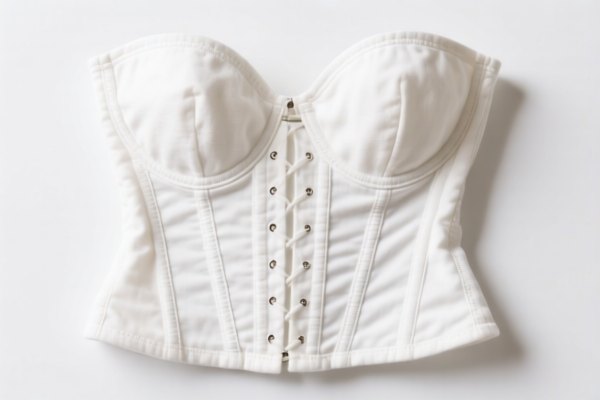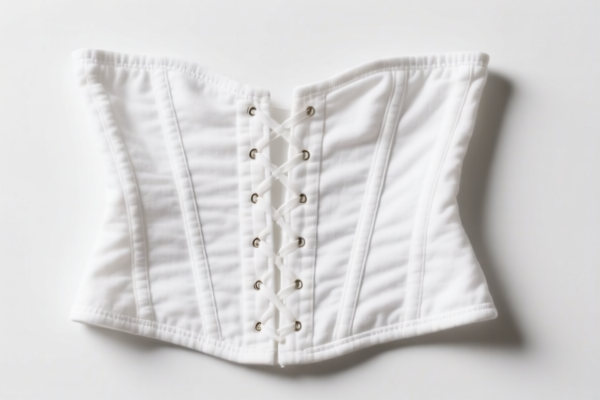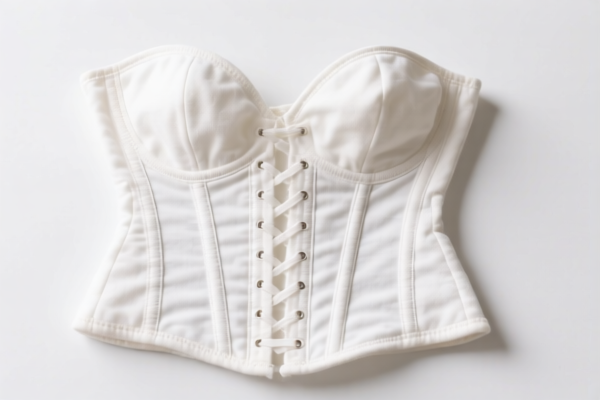| HS Code | Official Doc | Tariff Rate | Origin | Destination | Effective Date |
|---|---|---|---|---|---|
| 6117909080 | Doc | 52.1% | CN | US | 2025-05-12 |
| 6117909095 | Doc | 52.1% | CN | US | 2025-05-12 |
| 6114909010 | Doc | 35.6% | CN | US | 2025-05-12 |
| 6114909045 | Doc | 35.6% | CN | US | 2025-05-12 |
| 6212300010 | Doc | 61.0% | CN | US | 2025-05-12 |
| 6212300030 | Doc | 61.0% | CN | US | 2025-05-12 |




Corset Belt
A corset belt is a fashion accessory designed to shape the waist, and can also offer support. While historically part of restrictive undergarments, modern corset belts are primarily worn as outerwear to cinch the waist and create an hourglass figure, or as a stylistic element.
Material
Corset belts are constructed from a variety of materials, influencing both their aesthetic and functionality:
- Leather: A common choice, leather belts range from supple, thin varieties for a subtle waist cinch to thicker, more structured belts for dramatic shaping. Different finishes (smooth, textured, suede) and colors are available.
- Fabric: Often a woven material like cotton, satin, or brocade, these belts can be more comfortable than leather and are frequently used for decorative purposes. Elastic panels are sometimes incorporated for flexibility.
- Metal: Boning (steel, plastic) is often embedded within the belt to provide rigidity and shaping support. Metal buckles and embellishments are also common.
- Synthetic Materials: PVC and other synthetics are used for cost-effectiveness and specific aesthetic effects.
Purpose
The primary purposes of a corset belt are:
- Waist Shaping: To reduce the apparent waist circumference, creating a more defined silhouette.
- Fashion Statement: As a visible accessory to enhance an outfit's style.
- Support: Some belts, particularly wider ones with strong boning, offer back support.
- Posture Correction: Though not a medical device, certain designs can encourage better posture.
Function
Corset belts function by applying compression to the torso. The belt is fastened tightly around the waist, compressing the midsection. Boning prevents the belt from rolling or folding, maintaining its shape and providing consistent compression. Lacing (in some designs) allows for adjustable tightness.
Usage Scenarios
- Over Dresses & Tops: Worn over clothing to accentuate the waist. Common with both casual and formal attire.
- Layered with Outfits: Used as part of a layered look, often with sweaters, blouses, or jackets.
- As Part of Lingerie/Shapewear: Some wider, more robust belts are worn underneath clothing as shapewear.
- Costume/Theatrical Use: Frequently used in historical or fantasy costumes.
Common Types
- Wide Corset Belt: Typically 4-8 inches wide, providing significant shaping and support. Often features strong boning and lacing.
- Standard Corset Belt: 2-4 inches wide, offering moderate shaping and a more versatile aesthetic.
- Skinny Corset Belt: Less than 2 inches wide, primarily used for fashion purposes to add definition and visual interest.
- Plus Size Corset Belt: Designed with wider bands and stronger construction to accommodate larger body types.
- Elastic Corset Belt: Features elastic panels for greater comfort and flexibility. Offers less shaping than boned belts.
- Leather Corset Belt: Constructed from leather, ranging in thickness and style.
- Steampunk Corset Belt: Features a distinctive aesthetic with gears, buckles, and other industrial-inspired elements.
Corset belts fall under the category of articles used for shaping or supporting the body. Based on the provided information, the following HS codes are relevant:
- 6212300010: This HS code covers Brassieres, girdles, corsets, braces, suspenders, garters and similar articles and parts thereof, whether or not knitted or crocheted: Corsets Of cotton (349). This specifically applies to corsets made of cotton.
- 6212300030: This HS code covers Brassieres, girdles, corsets, braces, suspenders, garters and similar articles and parts thereof, whether or not knitted or crocheted: Corsets Other (859). This applies to corsets made of materials other than cotton.
Explanation of HS Code Structure:
- 62: This chapter covers articles of apparel and clothing accessories, not knitted or crocheted.
- 12: This heading specifically covers brassieres, girdles, corsets, braces, suspenders, garters, and similar articles.
- 30: This subheading further specifies corsets.
- 00: This further specifies the type of corset (cotton or other materials).
Tax Rate Details:
Both HS codes 6212300010 and 6212300030 have the following tax rates:
- Basic tariff: 23.5%
- Additional tariff: 7.5%
- Additional tariff after April 2, 2025: 30.0%
- Total tariff: 61.0%
Important Note:
Regarding HS codes 6212300010 and 6212300030, it is important to verify the material composition of the corset belt. If the corset belt is made of cotton, use HS code 6212300010. If it is made of any other material, use HS code 6212300030.
Customer Reviews
No reviews yet.